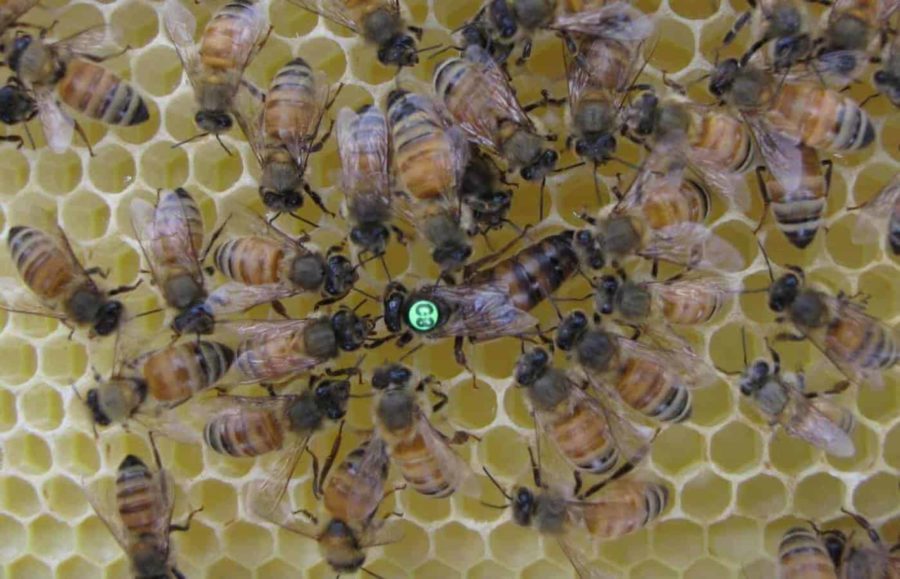Honey bee colonies worldwide have suffered from a range of damaging diseases. A new study has provided clues on how changing weather patterns might be driving disease in UK colonies.
Publishing their findings in the journal Nature Scientific Reports, the team led by Newcastle University found that the most severe disease of honey bees, caused by the Varroa mite, increased as climate temperatures increased but were reduced during heavy rainfall and wind.
Data collected from visits to over 300,000 honey bee colonies highlighted how the prevalence of six important honey bee diseases interacted in different ways with rainfall, temperature and wind.
The researchers found that the risk of a colony contracting European Foul Brood (EFB) increased with the amount of rainfall experienced. However, American Foul Brood (AFB) and Chronic Bee Paralysis were unaffected by weather, suggesting that other factors are driving those diseases. Varroosis (infection of Varroa mites) was the disease most affected by weather showing an increase in the risk due to temperature and a decrease because of rain and wind. Chalkbrood and Sacbrood both had reduced risk with increased amounts of wind.
Study lead, PhD student Ben Rowland, from Newcastle University’s School of Natural and Environmental Sciences, said: “Our analysis clearly shows that the risk of a colony contracting one of the diseases we examined is influenced by the weather conditions experienced by that colony. Our work highlights some interesting contrasts; for example, rainfall can drive one disease to become more common whilst another will become rarer.”
Professor Giles Budge, who leads the Modelling Evidence and Policy Group at Newcastle University and was a senior author on the paper, said: “We have long known that weather can influence the ability of honey bees to leave the hive and forage for food, but to better understand how our climate can influence honey bee disease is fascinating! This new knowledge will help us predict how honey bee disease might be influenced by future climate change.”
The study also investigated the effect of weather on disease hotspots. The South West of England was at increased risk of disease caused by Varroa mites. In addition, the team highlighted a hot spot for risk for the notifiable and damaging disease European foulbrood in an area comprising Powys, Shropshire, Herefordshire and Worcestershire.
This work is being completed with funding from Bee Disease Insurance Ltd and the BBSRC.
Reference:
Identifying the climatic drivers of honey bee (Apis mellifera) disease in England and Wales
Ben Rowland, Steve P. Rushton, Mark D.F. Shirley, Mike A. Brown and Giles E. Budge
Nature Scientific Reports: www.nature.com/articles/s41598-021-01495-w DoI: 10.1038/s41598-021-01495-w

